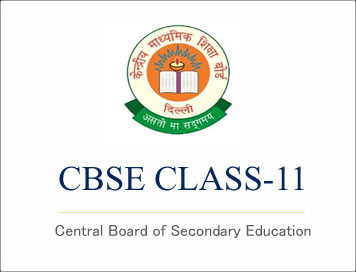CBSE Class-11 Syllabus 2018-19 (Home Science)
Disclaimer: This website is NOT associated with CBSE, for official website of CBSE visit - www.cbse.gov.in
CBSE Class-11 Syllabus 2018-19 (Home Science)
Home Science as a discipline aims to empower learners by developing understanding of five different
- areas namely:
- Food and Nutrition
- Human Development, Childhood Studies
- Resource Management
- Fabric and Apparel Science
- Development Communications and Extension
- The subject helps students to understand changing needs of Indian society, academic principles as well as
- develop professional skills.This would make them competent to meet challenges of becoming a
- responsible citizen.
Objectives:
The syllabus at Senior Secondary level develops an understanding in the learners that the knowledge and skills acquired through Home Science facilitates development of self, family and community. It endeavors to –
- Acquaint learners with the basics of human development with specific reference to self and child.
- Help to develop skills of judicious management of various resources.
- Enable learners to become alert and aware consumers.
- Impart knowledge of nutrition and lifestyles to enable prevention and management of diseases.
- Inculcate healthy food habits.
- Help to develop understanding of textiles for selection and care of clothes.
- Develop skills of communication to assist in advocacy and dissemination of knowledge tocommunity
Cource Structure :
| SR.No | Unit | No.of Period | Marks |
|
Introduction: Evolution of the discipline and its relevance to the quality of life |
05 | 22 | |
| 1. |
Understanding oneself: Adolescence |
55 | |
| 2. |
Understanding Family, Community and Society |
30 | 15 |
| 3. |
Childhood |
40 | 18 |
| 4. | Adulthood | 50 | 18 |
| Total | 180 | 70 | |
| Practical | 40 | 30 | |
| Grand Total | 220 | 100 |
Unit I: Understanding oneself: Adolescence
Chapter-2 Understanding the self
A. „Who am I‟?
B. Development and Characteristics of the self
C. Influences on identity
- Biological and physical changes
- Socio-cultural contexts
- Emotional changes
- Cognitive changes
Chapter-3 Food, nutrition, health and fitness- Introduction, Balanced Diet, Health and Fitness, Using basic food groups for planning balanced diets, Vegetarian food guide, Dietary patterns in adolescence, modifying diet related behavior, Factors influencing eating behavior, Eating disorders at adolescence.
Chapter-4 Management of resources - time, money, energy and space- Introduction, Human and Non- Human Resources, Individual and shared resources, Natural and community resources, Characteristics of Resources, Managing resources, The management process.
Chapter-5 Fabric around Us- Introduction, Fibre properties, Classification of textile fibres, Yarns, Fabric production, Textile Finishing.
Chapter-6 Media and communication technology- Communication and communication technology, What is media? What is communication technology?
Unit II: Understanding family, community and society
Chapter-7 Relationships and interactions with „significant others‟:
- Family
- School - peers and educators
- Community and Society
Chapter-8 Concerns and needs in diverse contexts: Family, school, community and society Key areas:
a. Health, Nutrition and Hygiene- Introduction, Health and its dimensions, Health care, Indicators of Health, Nutrition and Health, Nutrients, Factors affecting nutritional well- being, Nutritional problems and their consequences, Hygiene and Sanitation.
b. Work, Worker and workplace- Introduction, Work, Worker,Workplace.
c. Resource availability and Management- Time Management, Space Management.
Unit III: Childhood
Chapter-9 Survival, Growth and Development- Meaning, areas, stages in development.
Chapter-10 Nutrition, Health and Wellbeing- Introduction, Nutrition, Health and Wellbeing during infancy; Nutrition, Health and Wellbeing of preschool children; Nutrition, Health and Wellbeing of school- age children, Factors
that influence diet intake of pre-school age and school- age children, Healthy habits, Health & nutrition issues of school- age children.
Chapter-11 Care and Education- Introduction, Infancy & early childhood years, Meaning of care & education, Who provides Early childhood care & education (ECCE)? Care and education during middle childhood years,
difficulties and nature of primary education.
Chapter-12 Our Apparel- Clothing functions and the selection of clothes, Factors affecting selection of clothing in India, Understanding children‟s basic clothing needs, Clothing requirements at different childhood stages,
Clothing for children with special needs
Click Here To Download Full Syllabus
Courtesy: CBSE
